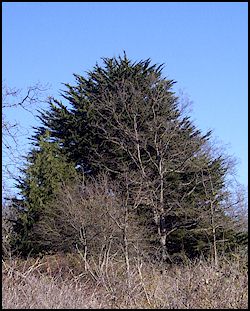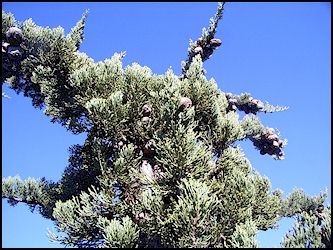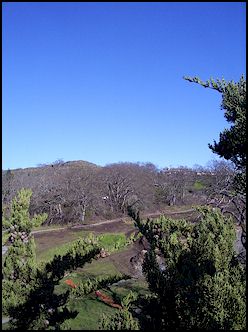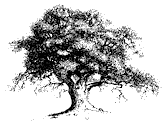Tree
or Weed:
Judging from a Distance
I recently became involved in a discussion about the
future of a specific tree within a new subdivision in our community.
It was interesting to see the arguments and the passion coming forth
- some from people who hadn't even seen the tree.
My own thoughts were strong but, luckily, I remained
quiet.
At question was a Monterey Cypress (Cupressus macrocarpa)
- not exactly a common subject in BC. The setting was important in the
equation - merely 100 metres from a nature sanctuary dedicated to preservation
of the Garry oak
ecosystem - the most threatened in Canada. Completely surrounded
by urbanization, this small pocket is hugely pressured by exotic species
such as Scotch broom, daphne, English ivy, etc. Monterey Cypress is
clearly not important in the scope of this ecosystem, so why would anyone
care?
My typical reaction was to head for the web and to
learn more about the tree. Native only to a small area in Monterey County,
California, it is a rare tree indeed.  It
is immortalized in photos and paintings of specimens clinging precariously
to wave-thrashed rocky coastlines. Interestingly, it rarely survives
very far from the coast in North America, where the salt-spray protects
it from the canker that afflicts it inland.
It
is immortalized in photos and paintings of specimens clinging precariously
to wave-thrashed rocky coastlines. Interestingly, it rarely survives
very far from the coast in North America, where the salt-spray protects
it from the canker that afflicts it inland.
It has, however, thrived in Europe and elsewhere where
the canker is not a problem, and is often planted for ornamental reasons.
Away from the coast, it grows quit rapidly, often to huge sizes, in
a form not at all similar to the ones depicted in paintings.
So, why care about an exotic like this on an old farm
in Saanich? I couldn't imagine!
Until I finally visited the tree!
 What
a majestic tree! It is indeed much bigger than those depicted in paintings,
but still small compared to the largest specimens - "only"
1.3 metres in diameter at breast height.
What
a majestic tree! It is indeed much bigger than those depicted in paintings,
but still small compared to the largest specimens - "only"
1.3 metres in diameter at breast height.
It is one mass of branches - starting low and drooping
to the ground all around - so the trunk cannot be seen unless one ventures
underneath. It is clearly a magnet to kids - all those branches make
for ideal climbing, and there are several platforms installed on the
way up.
My feelings for this tree changed rapidly! All issues
of whether this tree is native or whether is was worth saving from the
developers evaporated. This tree in itself has a character - a presence,
that makes all else irrelevant. (The point was not actually whether
to save the tree - the developer had already committed to doing so,
based largely on nearby residents' request, and against the advise of
two arborists who insisted the tree was doomed anyway - that is was
dying from the top down, and has only a few years to go.)

 My
son had a close and intimate adventure in the tree a few days later;
his photos accompany this article.
My
son had a close and intimate adventure in the tree a few days later;
his photos accompany this article.
So who's to decide the fate of a tree? Someone looking
at information or statistics and generalities? Or someone that has intimate
contact with the tree?
Isn't that the problem with so much of modern society?
Decisions are made by people in remote places - using sterile data that
does not factor in the feelings on those most affected. They use big
numbers that are rounded up so that details are completely lost. When
the bottom line is measured in millions of dollars, there is no room
for details.

This is also the problem in industrial forestry - where
not only trees but entire forests are razed based on the figuring of
corporate planners, bureaucrats and politicians.







